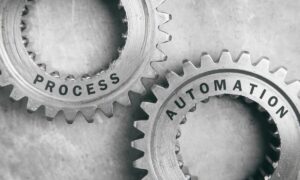Business process automation has revolutionized the way companies operate, particularly in the realm of human resources. With the influx of data and the rising need for precision, businesses today require robust tools that can streamline HR processes, make informed predictions, and ultimately drive efficiency. This is where predictive analytics tools come into play. By leveraging these tools, businesses can make their HR Business Process Management (BPM) more efficient and effective.
Understanding Predictive Analytics
Predictive analytics involves using statistical techniques and algorithms to analyze historical data and predict future outcomes. It’s akin to looking into a crystal ball, but with a scientific approach. The beauty of predictive analytics lies in its ability to make sense of large volumes of data, identify patterns, and forecast trends that can inform strategic decisions.
For instance, predictive analytics can help HR professionals forecast hiring needs, identify employee turnover trends, and predict performance levels. This enables them to strategize and plan ahead, ensuring business continuity and growth.
With the help of business process automation, predictive analytics can be seamlessly integrated into HR workflows. This not only enhances accuracy and efficiency but also frees up HR professionals to focus on more strategic and value-adding tasks.
The Potential of Predictive Analytics in HR BPM
The application of predictive analytics in HR BPM is vast and transformative. It can redefine the way HR functions operate, bringing about significant improvements in efficiency, productivity, and strategy. Here are some of the key benefits:
- Improved Hiring: Predictive analytics can analyze historical hiring data and predict the success rate of potential candidates. This helps in making informed hiring decisions, reducing the risk of bad hires, and improving the overall quality of talent.
- Reduced Turnover: By analyzing patterns in employee behavior and performance, predictive analytics can identify employees who are likely to leave the organization. This enables HR to take proactive measures to retain talent and reduce turnover costs.
- Enhanced Performance Management: Predictive analytics can forecast employee performance levels based on historical data. This allows HR to devise effective performance management strategies and ensure optimal productivity.
By automating these processes with tools like Flokzu, businesses can reap the benefits of predictive analytics without the hassle of manual data processing and analysis. This not only saves time and resources but also ensures greater accuracy and reliability in predictions.
Choosing the Right Predictive Analytics Tool
With a multitude of predictive analytics tools available in the market, choosing the right one can be a daunting task. The key is to select a tool that aligns with your business needs, integrates seamlessly with your existing HR BPM, and offers a good return on investment.
Before making a decision, consider the tool’s ease of use, scalability, data security, and support services. It’s also crucial to consider the tool’s ability to integrate with your HR BPM platform. Flokzu, for instance, offers seamless integration with various predictive analytics tools, making it a preferred choice for many businesses.
Remember, investing in a predictive analytics tool is not a one-time event but a long-term strategic decision. Therefore, it’s important to view the pricing and consider the potential return on investment. To get a sense of Flokzu’s competitive pricing and its comprehensive offerings, feel free to explore our website.
Integrating BPM Analytics for Enhanced Decision-Making
Incorporating bpm analytics into HR BPM can significantly elevate the decision-making process. By analyzing BPM data, HR managers can gain insights into the efficiency of their processes and identify areas for improvement. This analytical perspective ensures that HR departments are not just reactive but proactive in their strategies.
For example, bpm data analytics can pinpoint bottlenecks in recruitment workflows, allowing for a more streamlined hiring process. Moreover, it can help in fine-tuning onboarding procedures, employee training programs, and even succession planning. The data-driven approach afforded by bpm analytics transforms HR BPM from a supportive function to a strategic powerhouse within the organization.
The Final Word
Enhancing HR BPM with predictive analytics offers numerous benefits, from improved hiring and reduced turnover to enhanced performance management. However, to fully leverage these benefits, businesses need to choose the right predictive analytics tool and integrate it seamlessly with their HR BPM.
Business process automation plays a crucial role in this integration, enabling businesses to streamline their HR processes, make accurate predictions, and drive strategic decisions. With a reliable platform like Flokzu, businesses can effortlessly automate their HR BPM and harness the power of predictive analytics.
Ready to take your HR BPM to the next level with predictive analytics? Schedule a free demo of Flokzu today and discover how we can help you streamline your processes, make informed predictions, and drive business growth.






























